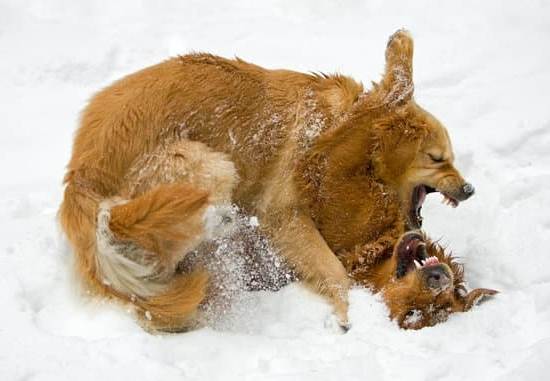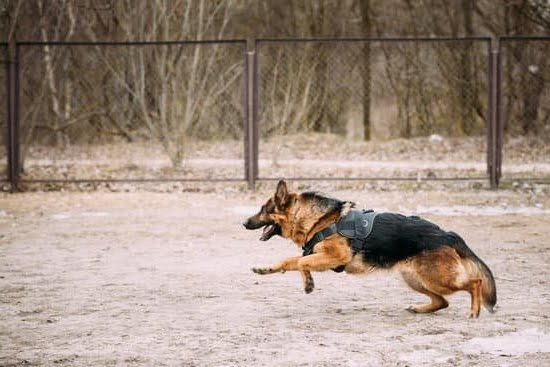Are you looking to train your dog without using a clicker? While clicker training has proven to be an effective method for teaching new behaviors, there are alternative approaches that can achieve the same results. In this article, we will explore different techniques and strategies for training your dog without the use of a clicker. From understanding positive reinforcement to utilizing verbal cues and commands, we will cover various methods that can help you effectively communicate with your furry friend.
Positive reinforcement is a key concept in dog training, and it involves rewarding desired behaviors to encourage their repetition. By understanding this principle, you can effectively train your dog without relying on a clicker.
Verbal cues and commands can also serve as an alternative means of communication, allowing you to guide your dog’s behavior without the use of a clicker. Additionally, incorporating treats and rewards can further reinforce positive behaviors, making the training process more engaging and enjoyable for your dog.
In addition to verbal cues and treats, hand signals and body language can also play a crucial role in communicating with your dog during training sessions. Consistency and patience are essential components of successful dog training, regardless of whether or not you are using a clicker. By embracing alternative methods and implementing them consistently, you can effectively address unwanted behaviors and foster positive learning experiences for your dog.
Understanding the Concept of Positive Reinforcement
Positive reinforcement is a powerful tool in dog training, and it can be used effectively even without a clicker. This method involves rewarding your dog for good behavior to increase the likelihood of that behavior being repeated. Verbal praise, treats, and other rewards can all be used in place of a clicker to reinforce positive behavior.
One way to train a dog without a clicker is to use verbal cues and commands. When your dog performs the desired behavior, such as sitting or staying, immediately say a verbal cue such as “good boy” or “well done.” Over time, your dog will associate these verbal cues with positive reinforcement and will be more likely to repeat the desired behavior.
In addition to verbal cues and commands, treats and rewards can also be used effectively in training without a clicker. When your dog obeys a command or exhibits good behavior, offer them a small treat or reward. This will help them understand what is expected of them and motivate them to continue behaving well. It’s important to remember that the key to effective positive reinforcement training is timing – the reward must be given immediately after the desired behavior occurs.
| Training Methods | Description |
|---|---|
| Verbal cues and commands | Using words like “good boy” or “well done” as immediate positive reinforcement |
| Treats and rewards | Offering small treats or rewards immediately after good behavior to reinforce it |
Using Verbal Cues and Commands as Alternative to Clicker
Clicker training has been a popular and effective method for training dogs, but not everyone may have access to a clicker or may prefer to use alternative methods. Thankfully, there are several ways to train a dog without relying on a clicker. One effective alternative is using verbal cues and commands to communicate with your dog.
Verbal cues and commands can be just as powerful as a clicker when used consistently and effectively. By using clear and consistent verbal cues, you can teach your dog to associate specific words with certain behaviors or actions. Here are some tips for using verbal cues and commands as an alternative to clicker training:
- Choose simple, distinct words for each command, such as “sit,” “stay,” “come,” and “down.”
- Use a firm and confident tone of voice when giving verbal commands to convey authority and clarity.
- Pair the verbal cue with a physical gesture or hand signal to reinforce the command.
In addition to using verbal cues, it’s important to use positive reinforcement in combination with these commands. Just like with clicker training, reward your dog with treats, praise, or playtime when they correctly respond to your verbal cues. With consistency and patience, your dog will learn to understand and respond to your verbal commands effectively.
Overall, while clicker training can be highly effective, it’s not the only way to train a dog successfully. Using clear verbal cues paired with positive reinforcement can create a strong foundation of communication between you and your furry friend even without the use of a clicker.
Incorporating Treats and Rewards in Training Without Clicker
When it comes to training your dog without a clicker, it’s important to find alternative ways to effectively communicate with your furry friend. One of the most popular methods for positive reinforcement training without a clicker is by using treats and rewards. By understanding what motivates your dog and using it to your advantage, you can still achieve successful training sessions without the need for a clicker.
Verbal praise and treats go hand in hand when training a dog without a clicker. Whenever your dog follows a command or exhibits desirable behavior, immediately reward them with a treat and provide verbal praise such as “good boy” or “good girl.” This helps reinforce the positive behavior and encourages them to continue doing what you ask of them. Over time, they will associate the verbal cue with the reward, making it an effective alternative to using a clicker.
It’s important to note that when using treats and rewards in training without a clicker, moderation is key. You don’t want your dog to become solely reliant on treats for obedience. Gradually reduce the frequency of giving treats as they become more consistent with following commands. This will help ensure that they are obeying out of respect and not just for the reward.
Finally, keep in mind that every dog is different, so what works for one may not work for another. Be patient and observe how your dog responds to the training methods you implement. With dedication, consistency, and patience, you can successfully train your dog without a clicker.
| Method | Description |
|---|---|
| Verbal Praise | Using positive words such as “good boy” or “good girl” to reinforce good behavior. |
| Moderation | Gradually reducing treat frequency as the dog becomes more consistent with following commands. |
| Patience | Being patient while observing how your dog responds to different training methods. |
Utilizing Hand Signals and Body Language for Effective Communication
When it comes to training your dog without the use of a clicker, utilizing hand signals and body language can be incredibly effective in communicating with your furry friend. Dogs are highly perceptive animals, and they rely heavily on visual cues to understand commands and expectations. By incorporating hand signals and body language into your training routine, you can enhance your communication with your dog and strengthen their understanding of various commands.
Benefits of Hand Signals
Hand signals provide a clear, visual representation of the desired behavior or command. This can be especially helpful for dogs who may have difficulty hearing or have a limited understanding of verbal cues.
Additionally, hand signals can be used in various situations where verbal commands may not be possible or practical, such as during outdoor activities or when in noisy environments. By incorporating hand signals into your training regimen, you can create a more versatile and reliable means of communication with your dog.
Establishing Consistent Body Language
In addition to hand signals, creating consistent body language is essential for effectively communicating with your dog. Dogs are observant animals and pay close attention to their human companions’ posture, gestures, and overall body language.
By establishing consistent body language for different commands or behaviors, you can reinforce the meaning behind each signal and create a stronger connection between you and your pet. It’s important to maintain consistency in both hand signals and body language throughout the training process to avoid confusion.
Training Tips for Hand Signals and Body Language
To successfully train your dog without a clicker using hand signals and body language, it’s important to start with basic commands such as sit, stay, come, and lie down. Use clear and deliberate hand gestures along with corresponding verbal cues when introducing these commands to help associate the two forms of communication.
Be sure to consistently reinforce these signals with rewards to encourage positive behavior. As you progress in training, gradually introduce new hand signals for more advanced commands while maintaining consistency in both verbal cues and body language throughout the process.
By embracing alternative methods like utilizing hand signals and body language in the training process, you can effectively communicate with your dog without relying on a clicker. With patience, consistency, and positive reinforcement techniques, you can build a strong foundation of understanding between you and your furry companion while fostering good behavior and obedience.
Implementing Consistency and Patience in Training Process
Training a dog without using a clicker requires consistency and patience from the owner or trainer. Consistency is important in reinforcing positive behaviors and shaping the dog’s response to commands and cues. Additionally, patience is crucial as training takes time and every dog learns at their own pace.
Setting a Regular Training Schedule
Consistency in training can be achieved by setting a regular schedule for training sessions. Dogs thrive on routine, so having designated times for training each day will help reinforce what they have learned and make it easier for them to understand expectations.
Repetition and Practice
Repeating commands, cues, and routines during training sessions will help solidify the dog’s understanding of what is expected of them. It also helps in building their confidence as they become more familiar with the training process. Practicing consistently will also help in strengthening the bond between the owner or trainer and the dog.
Remaining Patient During Training
Patience is key when training a dog without a clicker. It’s important to give the dog enough time to understand and respond to commands, as well as to learn new behaviors. Getting frustrated or being inconsistent in expectations can hinder the progress of training. Remaining patient will ensure that both the dog and the trainer have a positive experience during training sessions.
By implementing consistency and patience in the training process, owners can effectively train their dogs without using a clicker. It may take time and effort, but with dedication and commitment, it is possible to achieve successful results using alternative methods of reinforcement.
Addressing and Correcting Unwanted Behaviors Without Clicker
Unwanted behaviors in dogs can be challenging to address, but it is possible to correct them without using a clicker. Here are some effective methods for addressing and correcting unwanted behaviors in dog training:
- Positive Reinforcement: Instead of using a clicker, you can still use positive reinforcement to address unwanted behaviors. When your dog exhibits the desired behavior, immediately reward them with verbal praise and treats. This will help them understand what behavior is expected from them.
- Redirecting: If your dog displays an unwanted behavior, such as jumping on guests, instead of using a clicker to mark the behavior, redirect their attention to something else. For example, ask them to sit or lay down and then reward them for obeying the command.
- Consistency: Consistency is key in addressing unwanted behaviors. It’s important to consistently reinforce the desired behavior and ignore or redirect the unwanted behavior every time it occurs. This will help your dog understand what is expected of them.
By implementing these methods, you can effectively address and correct unwanted behaviors in your dog without using a clicker. Remember that patience and consistency are crucial in the training process.
It’s important to note that every dog is different, so it may take time and practice to see improvements in their behavior. However, with dedication and the right techniques, you can successfully train your dog without relying on a clicker.
Tips for Successful Training Sessions Without Clicker
Training a dog without a clicker may seem challenging, but it is definitely possible with the right techniques and approach. Here are some tips for successful training sessions without using a clicker.
First, it’s important to establish clear and consistent verbal cues and commands for your dog. Use simple and distinct words or phrases, such as “sit,” “stay,” or “come,” to communicate your expectations to your furry friend. Be sure to use the same cues every time to avoid confusion.
In addition to verbal cues, incorporating treats and rewards into your training sessions can be highly effective. When your dog successfully follows a command or demonstrates desired behavior, reinforce it with a favorite treat or praise. This positive reinforcement will help your dog understand what is expected of them and motivate them to repeat the behavior in the future.
Another tip for successful training without a clicker is to utilize hand signals and body language. Dogs are highly receptive to visual cues, so incorporating hand gestures alongside verbal commands can enhance communication and understanding. For example, raising your hand as you say “sit” can help reinforce the command.
By following these tips and staying patient and consistent throughout the training process, you can effectively train your dog without using a clicker. It’s important to remember that every dog is unique, so finding the right combination of techniques that work best for your furry friend may take some trial and error. But with dedication and persistence, you can achieve successful obedience training without relying on a clicker.
Conclusion
In conclusion, while clicker training has its benefits, there are alternative methods for effectively training your dog without the use of a clicker. Positive reinforcement, such as rewarding your dog with treats and praise, can be just as effective in shaping their behavior. Verbal cues and commands, along with hand signals and body language, are valuable tools for communicating with your dog during training sessions.
Consistency and patience are key components of any successful dog training endeavor, regardless of the method used. It’s important to address and correct unwanted behaviors without the need for a clicker, and to establish clear boundaries to guide your dog’s behavior.
Ultimately, embracing alternative methods for effective dog training opens up a world of possibilities for bonding with your canine companion and fostering a strong relationship based on trust and communication. By understanding how to train a dog without a clicker, you can tailor your approach to best suit the needs of both you and your furry friend. With dedication and persistence, you can achieve the desired results in training your dog using alternative techniques.

Welcome to the blog! I am a professional dog trainer and have been working with dogs for many years. In this blog, I will be discussing various topics related to dog training, including tips, tricks, and advice. I hope you find this information helpful and informative. Thanks for reading!





